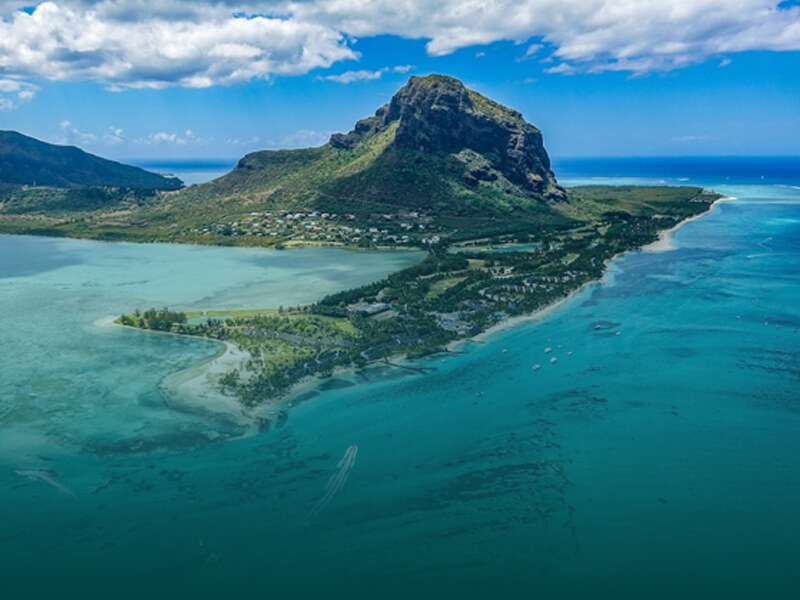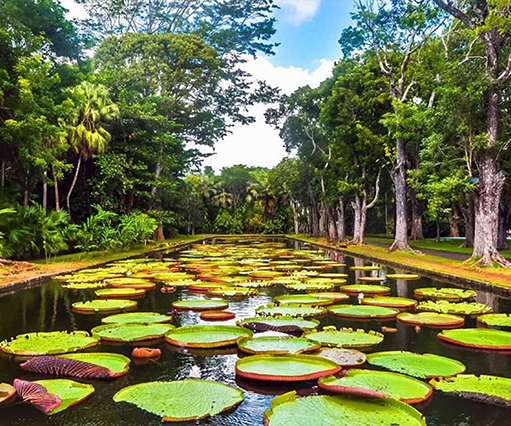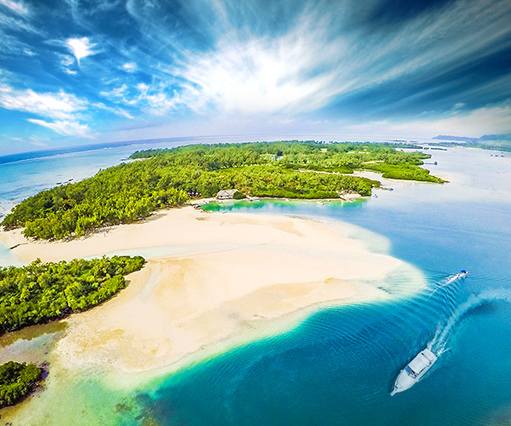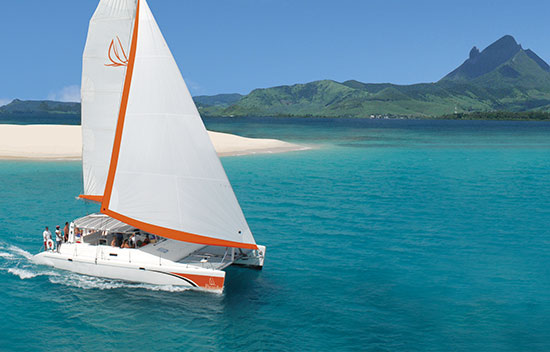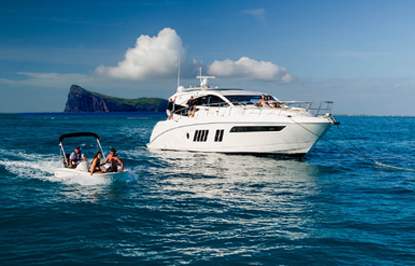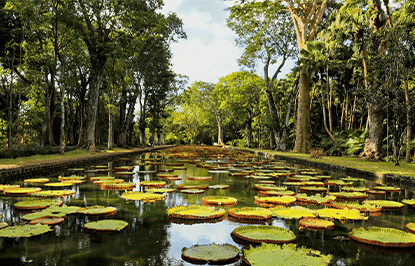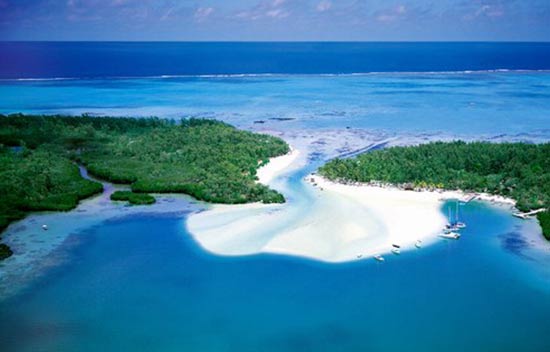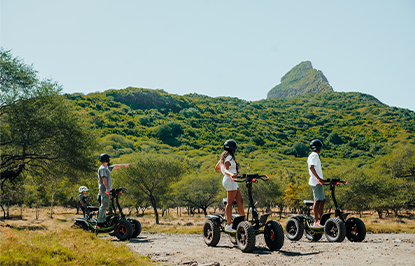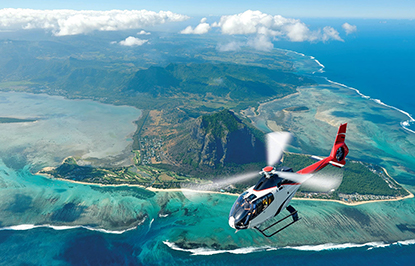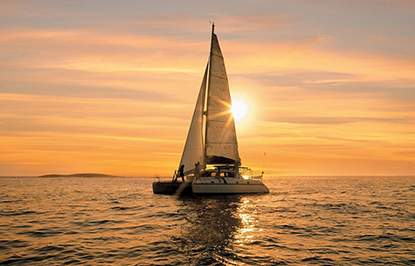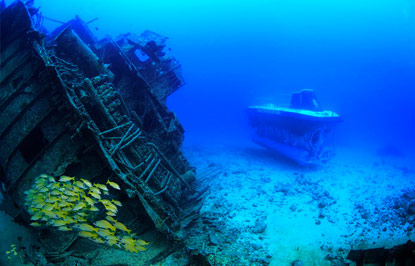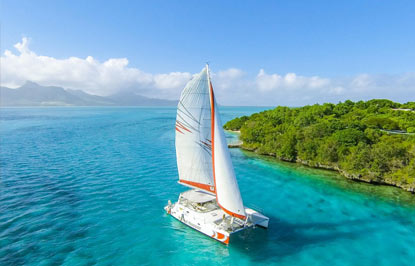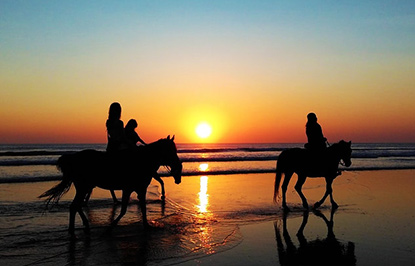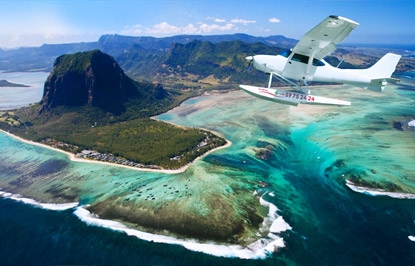A Comprehensive Guide to Cyclones in Mauritius
Cyclones in Mauritius are intense storms characterised by strong winds and heavy rainfall. They are a result of the warming ocean temperatures during the cyclone season, which typically occurs from December to March.
When the water temperature on the surface evaporates much quicker than the water in underlying layers, high cloud towers build and are put into motion by the rotation of the earth - causing these clouds to bring heavy rainfalls.
Mauritius Cyclones - Formation, Lifespan, Impacts
How are cyclones formed?
Cyclones form over warm ocean waters near the equator when warm water evaporates, rises, and creates low pressure. The Coriolis effect then causes the air to spiral inward, forming a circular pattern known as an eyewall.

As long as the cyclone remains over warm waters with little wind shear, it can strengthen and grow.
Are cyclones and storms the same thing?
While both cyclones and storms involve strong winds and heavy rainfall, they are not the same. Cyclones are a specific type of storm characterised by their circular motion and low-pressure centres. In contrast, storms can encompass a broader range of weather events, including thunderstorms, blizzards, and hurricanes.
How often do cyclones occur in Mauritius?
Cyclones directly hit Mauritius approximately every 5 years, but the island experiences remnants of 3 to 5 storms annually. These storms are most likely to form on the Tropic of Cancer and the Tropic of Capricorn, where water temperatures remain around 26°C for extended periods.
How long does a cyclone last in Mauritius?
The duration of a cyclone in Mauritius can vary widely, but on average, they typically last around 2 to 4 days. However, this can be shorter or longer depending on the speed of the storm's movement, its intensity, and other environmental factors.
What are the effects of cyclones in Mauritius?
Cyclones bring about high winds, torrential rainfall, and storm surges. These can cause infrastructure damage, power outages, and disruption of essential services. Coastal areas are particularly vulnerable to flooding and erosion during cyclones.

Preparation & Precautions in the Event of a Cyclone
Navigating Cyclones in Mauritius - Your FAQs Answered
Mauritius has a well-structured cyclone warning system with four classes indicating the severity of the cyclone. The government disseminates information through TV, radio, and a free helpline (96), while citizens are advised to secure their homes, prepare emergency kits, and identify safe shelters.
How can I stay informed about cyclone updates?
- Stay tuned to local radio and TV stations for cyclone bulletins and advisories
- Use the free helpline (96) for the latest information and assistance in multiple languages
What precautions should I take before a cyclone?
- Ensure your home is secure
- Trim tree branches that are likely to cause damage to your house, telephone and electricity lines
- Clear loose materials from your property
- Identify safe places for your boat
- Prepare an emergency kit
What should my emergency kit contain?
- Portable AM/FM radio and fresh batteries
- Torch, lamps, candles, matches, etc
- Water containers
- Canned food, can opener, stove with sufficient gas
- Rice, flour, biscuits, cheese, etc
- First aid kit and essential medicines
- Clothes secured in plastic bags
- Tool kit for emergency repairs (hammer, nail, rope, etc..)
What actions should I take during different cyclone warning classes?
- Class I: Prepare emergency kit and monitor cyclone bulletins
- Class II: Secure windows and doors, store drinking water, and continue monitoring bulletins
- Class III: Complete preparatory measures, fix shutters, secure loose items, and shelter domestic animals
- Class IV: Stay indoors, seek shelter in the safest part of your home, disconnect electrical appliances, and listen to cyclone bulletins for updates
What should I do after a cyclone?
- Wait for the all-clear signal from Authorities before leaving your shelter
- Beware of hazards such as fallen power lines, damaged buildings and trees, and flooded areas
- Boil water for drinking purposes
- Clean up debris
- Drain out stagnant water to prevent the proliferation of mosquitoes /diseases
The Cyclone Warning System in Mauritius

Class I: Issued not less than 36 hours, nor more than 48 hours, before the occurrence of gusts of 120 kilometres per hour
Class II: Issued so as to allow, as far as practicable, 12 hours of daylight before the occurrence of gusts of 120 kilometres per hour
Class III: Issued so as to allow, as far as practicable, 6 hours of daylight before the occurrence of gusts of 120 kilometres per hour
Class IV: Issued when gusts of 120 kilometres per hour are recorded in some places and are expected to continue
Safety Bulletin is issued for the purpose of :
- Lifting the cyclone warning class III or IV, and
- Informing the public of the existence of severe weather conditions associated with the cyclone and other environment risks, depending on the nature and extent of the damage caused by the cyclone
Major Tropical Cyclones in Mauritius
- Intense Cyclone Carol in 1960
- Intense Cyclone Gervaise in 1975
- Intense Cyclone Claudette in 1979
- Intense Cyclone Hollanda in 1994
- Very Intense Tropical Cyclone Dina in 2002
- Tropical Cyclone Belal in 2024
These cyclones caused significant damage to infrastructure, affected the livelihoods of many Mauritians and even resulted in several deaths. You can find more here.














